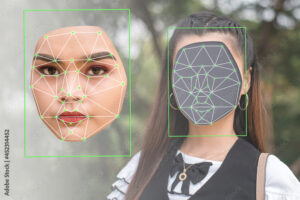The past, present and future of AV technology in schools
While I understand the implications that Postman makes in this statement, I have to argue some of its implications. If we look at the media of that era, there were many concerns surrounding “Sesame Street” and its impact on children’s programming. At the time, Mr. Dressup (a TV program focused on simplicity, creativity and imagination) was worried that “Sesame Street” would kill their viewership and label them obsolete. Yet, after the first season of “Sesame Street”, they did not kill other children’s programming. In fact, “Mr. Dressup” remained equally as strong, if not surpassing the ratings of “Sesame Street”. Just because a new program creates a different, and more seemingly engaging experience, does not mean that it can (or will) replace that which came before them.

The same can be said for education. While the “Sesame Street” concept undermined traditional schooling, the traditional schooling – or the “Mr Dressup” concept – is still essential (at least in this day and age) to the foundations of education. Unfortunately, you cannot substitute the fundamentals of education. Does this mean that we can only use the “Mr. Dressup” or “Sesame Street” concept towards education? Absolutely not. I feel the greatest growth comes from a place where the “Sesame Street” and “Mr. Dressup” concepts meet and work in tandem with each other. The “Sesame Street” concept is dynamic and a multisensory experience, but we also need to work on basics, including the simplicity, imagination, and curiosity of the “Mr. Dressup” concept.
Nevertheless, there is a place for a “Sesame Street” concept in schools, when used with intention and forethought. AV technology allows for a broader world to enter the classroom and provides a more immersive and multisensory experience. AV technology has always allowed educators and students to explore the world, connect with others, and deepen learning by exploring authentic material which would not be available to them otherwise. As we saw in the short film used in class last week, the importance of library material in the classroom allowed for the students to visually experience a topic, instead of merely reading about it. Today, for example, we are not held to learning about the Egyptian pyramids from a textbook. We can explore the passageways and the tombs of the dead pharaohs by taking a virtual tour provided by museums and universities. We can talk to astronauts in space, watch animals be born, hear the voices of those long passed tell their story, and explore historic documents as if they were right in front of us.
Also, if used with intention, AV technology can be a tool which provides further advancement of students’ understanding of the material. These tools can help those who struggle and provide a challenge to those who are bored. It provides instant feedback for basic skills. However, there are limitations to AV technology. It is essential to not assume that every student has equal access to technology at home. This can hinder homework assignments and the options for students to receive this individualized help at home. On the other hand, for some students (from my experience with middle years) it sometimes has nothing to do with the medium used to transmit the material, but everything to do with the material itself. Some refuse to participate in the lesson regardless of how engaging the tech is.
Education and learning are not bound by the four walls of a school. While the potential learning can be acquired from technology, it is important to remember not to become completely reliant on this technology. This is particularly relevant in schools where access to technology can vary drastically between schools. Remaining up-to-date with technology is hard for school divisions’ budgets. Facing deficits, the first things that are cut are those items that are non-essential. One could argue that AV technology is essential to the evolution of the classroom. However, the reality is that there is shared technology in the school that, while it may be beaten and battered, functions to a level that is acceptable for student learning. Even then, some useful programs (particularly those that are free) are blocked from school devices due to the potential risk of downloading malware/ransomware. It becomes even more dire when dealing with failing budgets which limits photocopying, yet internet outages are frequent. While AV technology holds boundless potential, our main restriction will always be cost.
So, does this “Sesame Street” concept successfully undermine traditional schools? Yes and no. It exemplifies that AV technology and student engagement allow more exploration and engagement with the course material. However, we do see a need for fundamentals which enable this “Sesame Street” concept of education to exist. While all that is flashy is not always the best, it can provide a more enriched understanding of the topics due to its engaging nature. However, it does not completely undermine the traditional idea of schooling. The foundations of our learning and society are still focused on the “Mr. Dressup” approach. Today’s technology (mainly referencing AI) is in its infancy, and wildly under-regulated. Our laws and justice system are unable to keep up with the rapid evolution of technology. It only took one incident involving a major pop icon for governments to begin to talk about regulation. How many other people were destroyed by a similar incident (AI face or voice spoofing), and yet nothing was done? The power that AV technology wields is monumental. Our conversations in the classroom regarding AV technology must acknowledge this and include a significant discussion surrounding ethical usage and legal ramifications.


Sidenote: Postman was American, so his exposure to the Canadian children’s show was most likely non-existent. While one could compare Mr. Rogers to Mr. Dressup, as they shared similar philosophies, they did not provide the same impact.

I really love your point about how education and learning are not bound by the 4 walls of the school. We should be encouraging our students to learn from all of the experiences around them, and feed that curiosity!
Your post talks about how technology, like videos and interactive tools, is changing schools. You mention that while these new methods, like “Sesame Street,” are engaging, they don’t replace the basics of education, like what “Mr. Dressup” represents. You explain how AV technology can help students learn in different ways, like taking virtual tours or getting instant feedback on their work. But you also mention that not all students have equal access to this technology, and sometimes it’s not just about the tech, but also about the material being taught. Overall, you’re saying that while technology is helpful, it’s not the only thing that matters in education.